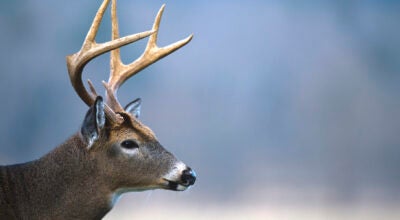‘New Beginnings’ exhibit now on display at Waterworks
Published 12:00 am Saturday, February 12, 2022
SALISBURY — Waterworks Visual Arts Center opened its newest exhibition, New Beginnings, on Monday and held its opening reception to meet the artists on Friday.
New Beginnings includes one solo show and a group show, consisting of collaborative works by four female artists. New Beginnings includes: Longing to Belong, featuring hand-embroidered textiles by artist Katherine Diuguid, and uncommon Connections, which includes mixed media works by artists Ingrid Erickson, Dani Iris, Hope Holmes and Rachel Goldstein.
Diuguid is a studio artist specializing in hand embroidery, dressmaking and textiles. Diuguid’s work investigates the use of weeds as a metaphor for the human need for belonging. Combining digital printing, eco-printing and various forms of stitching, Diuguid renders portraits of a plant typically regarded with little care and affection. In the exhibit, weeds symbolize resilience, bravery, vulnerability and the desire to belong, which for Diuguid, is reminiscent of a human’s desire for belonging.
“Foraging and stitching roadside plants has provided time to consider what it means to belong and has fostered an empathy for others that find themselves similarly longing to belong,” Diuguid said.
Iris explores the theme of personal relationships with objects, nature, or with other people.
“So much of our lives is spent reacting to forces beyond our control,” Iris said. “We exist in a perpetual cycle of reacting, processing, accepting, and moving forward.”
Iris said she was raised with the idea of self-reliance and self-sufficiency. So, she was determined to create and provide for herself as much as possible as a way to compensate for the assistance she received during her early years of motherhood. Part of this self-reliance is illustrated in her work, utilizing thrifted and recycled fabrics juxtaposed with paints she made herself from local and natural pigments. Iris credits the relationships she formed with people around her as inspiration for her work.
Like Iris, Goldstein explores the theme of relationships in her work, which alternates between landscape and self-portraiture.
“Seven years ago I lost my dad, and then navigated a challenging but beautiful relationship. During that time my mom lost the ability to take care of herself and slid into what many would describe as dementia; it still doesn’t have an exact name. My world changed tremendously, and the old roles I inhabited no longer fit,” Goldstein said.
Goldstein’s photography utilizes a multiple-exposure technique to help viewers conceptualize the “unreal, surreal swirl of sad, insane, and awesome” that inspired her work.
The juxtaposition of colors with more muted earth tones are a prominent feature of Holmes’ work. The work exhibits a mixture of sculpture art made from paper mâché with small tapestries and dangling objects of mixed media. Holmes says she hopes her unique take on recyclables sparks curiosity and, more importantly, acts as a catalyst for others to rethink the many possibilities of reusable materials.
Also considerate of ecology and environmentalism, Erickson explores the art of pollinators. Through research and collaboration with scientists and science museums, Erickson embarked on a journey to understand the fragility of pollinators and their ecosystems.
“In August 2020, when I set myself the task of making 1,000 hand-cut paper pollinators, this felt like a good number to reflect the impressive species diversity of this fascinating part of the entomological world,” Erickson said.
His work reflects the need for environmental stewardship and education.
“The realization that so many species of pollinators are at risk, and how much we rely on many of them — for example, for our food production and healthy ecosystems — was a big part of the impetus for this project,” Erickson said.
For some viewers, standing in close proximity to paper pollinators as opposed to live ones may seem like the lesser of two “weevils,” but Erickson hopes the exhibit facilitates an avenue of greater understanding and appreciation for the environmental contributions specimens make and a greater awareness of the importance of ecology and conservation.
Learn more about the museum, its exhibitions, educational opportunities and community outreach at waterworks.org.





